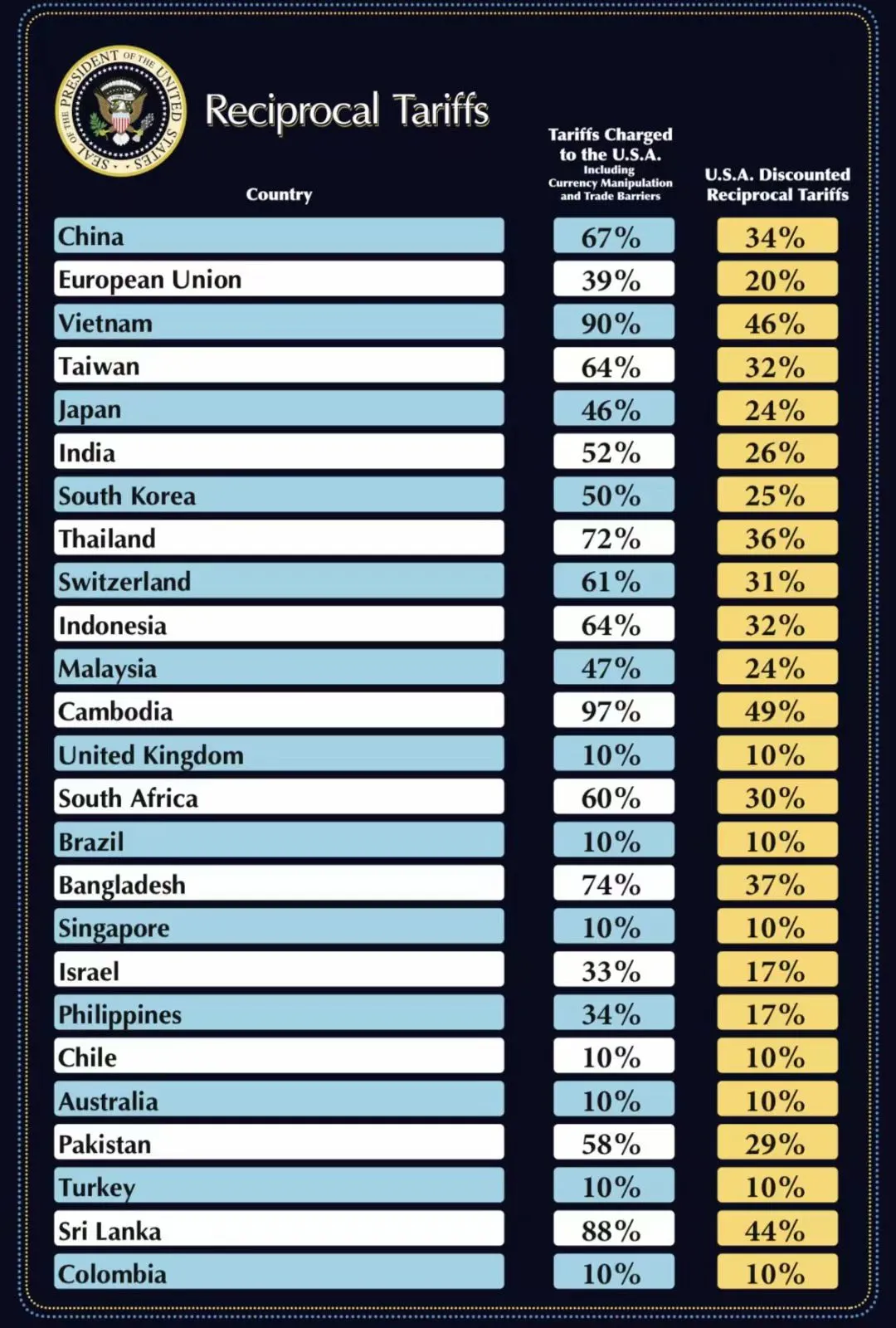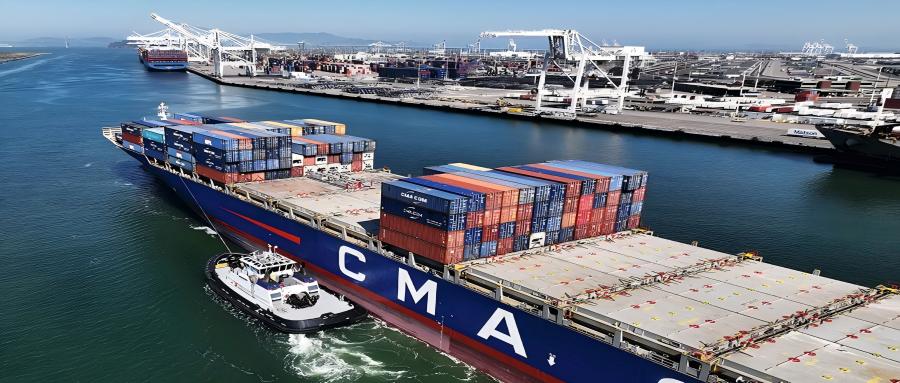



1.Products Impacted: All goods from China (excluding steel, aluminum, and auto parts under Section 232 tariffs).
Total Duty Calculation:
General Goods: Base rate + 7.5%/25% (Section 301) + 20% (Feb 2025 tariffs) + 34% = 54%+ total.
Steel/Aluminum: Base rate + Section 301 + 20% + 25% (Section 232).
Auto Parts: Base rate + Section 301 + 20% + 25% (Section 232).
All steel, aluminum, and their derivatives are subject to tariffs under Section 232 of the Trade Expansion Act of 1962, as outlined in the following U.S. government announcements:
Announcement 9704 (March 8, 2018): Adjusted aluminum product imports.
Announcement 9705 (March 8, 2018): Adjusted steel product imports.
Announcement 9980 (January 24, 2020): Adjusted steel/aluminum derivative imports.
Announcement 10895 (February 10, 2025): Updated aluminum import adjustments.
Announcement 10896 (February 10, 2025): Updated steel import adjustments.
Tariff Calculation for Steel/Aluminum Products:
Base Rate + Section 301 Tariffs (7.5% or 25%, if applicable) + 20% Ad Valorem Tariffs (February 2025) + 25% Section 232 Steel/Aluminum Tariff.
Exemption: These products are not subject to the new 34% reciprocal tariff.
Tariff Calculation for Auto Products:
Base Rate + Section 301 Tariffs (7.5% or 25%, if applicable) + 20% Ad Valorem Tariffs (February 2025) + 25% Section 232 Auto Tariff.
Policy Updates: Rates may change if the U.S. government issues new tariff policies or amendments. Always verify the actual tariff rate at customs clearance.
Documentation: Retain proof of shipment dates (e.g., AMS departure timestamps) to validate exemptions for in-transit goods.
Tariff Effective Date: April 9, 2025 (12:01 AM EDT).
Exemption for In-Transit Goods:
No 34% duty if shipment departed China before April 9 (based on AMS departure time).
Example: A vessel leaving Shanghai on April 8 arrives in Los Angeles on April 15 – no new tariff applies.

After the new policy takes effect, sellers can pay attention to whether the goods are subject to a 34% tax. The actual tax bill issued by the customs shall prevail. If an additional tax is imposed, the fees will be reimbursed on a real-time basis.

For Chinese sellers, the implementation of this round of tariff policy will undoubtedly bring multiple impacts.
First, Chinese goods have been subject to a 20% tariff before, and the profit margin is already very limited. Many sellers' products also involve the 301 list, and the tariff rate has been as high as 45% or more before. Now the implementation of a new round of "reciprocal tariffs" will undoubtedly further increase costs. Sellers can re-evaluate whether the product still has profit margins after the superposition of multiple tariffs, and adjust the selling price appropriately.
Secondly, we see that in addition to mainland China, countries or regions including Bangladesh (37%), Malaysia (24%), Cambodia (49%), Thailand (37%), Taiwan, China (32%), Japan (24%), Vietnam (46%), Pakistan (30%), etc. have been subject to higher reciprocal tariffs, which means that many sellers have no advantage in circumventing the rules of origin by transferring the supply chain.
In addition to the United States, sellers can also consider turning to other sites, such as Europe, Australia, Japan, etc., to reduce their dependence on the United States alone. Although a new round of tariff policies has been announced, the market is still cautious about its subsequent direction. After all, the Trump administration's policies have been reversed many times. Sellers can pay close attention to US policy developments.
With tariffs soaring in the U.S., redirecting focus to Europe offers:
Lower Trade Barriers: No retaliatory tariffs on Chinese goods.
Fast & Affordable Shipping: CUCFreight’s cheapest shipping from China to UK routes (7-10 days transit).
Warehousing Solutions: Store inventory in our UK hubs for faster local delivery.
Where Others See Problems, We Deliver.
Tariff policies may shift – bookmark our Live Tariff Tracker for real-time updates. Need help rerouting shipments? Contact our experts for customized logistics plans and cheapest shipping from China to UK rates.
 Mastering the Supply Chain: Streamlining the Process of Shipping Goods from China to CanadaMarch 13, 2024In today's globalized economy, the supply chain has become a crucial link connecting economies worldwide. With China being a major manufacturing hub, trade relations with Canada are becoming incre...view
Mastering the Supply Chain: Streamlining the Process of Shipping Goods from China to CanadaMarch 13, 2024In today's globalized economy, the supply chain has become a crucial link connecting economies worldwide. With China being a major manufacturing hub, trade relations with Canada are becoming incre...view Door-to-Door SolutionsMarch 27, 2025Door-to-Door Cargo Solutions: From Chinese Factories to Your Warehouse in 7-28 Days"Tired of managing multiple vendors for shipping, customs, and last-mile delivery? Our turnkey door-to-door serv...view
Door-to-Door SolutionsMarch 27, 2025Door-to-Door Cargo Solutions: From Chinese Factories to Your Warehouse in 7-28 Days"Tired of managing multiple vendors for shipping, customs, and last-mile delivery? Our turnkey door-to-door serv...view How To Import From China To Amazon FBA?June 27, 2023When it comes to importing products from China to Amazon FBA, there are a few things that you should consider. This process can be difficult and time-consuming, but with the right tools and resources,...view
How To Import From China To Amazon FBA?June 27, 2023When it comes to importing products from China to Amazon FBA, there are a few things that you should consider. This process can be difficult and time-consuming, but with the right tools and resources,...view How 200+ US Manufacturers Cut China Shipping Costs with Door to Door DeliveryMarch 13, 2025Discover how 217 US manufacturers achieved 21% average logistics savings through strategic door-to-door delivery from China. Learn their proven tactics: hybrid Incoterms configurations, supplier loading time optimization, and bonded warehouse networksview
How 200+ US Manufacturers Cut China Shipping Costs with Door to Door DeliveryMarch 13, 2025Discover how 217 US manufacturers achieved 21% average logistics savings through strategic door-to-door delivery from China. Learn their proven tactics: hybrid Incoterms configurations, supplier loading time optimization, and bonded warehouse networksview